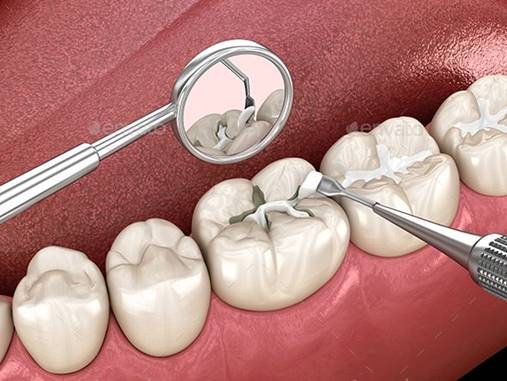How Long Do Composite Fillings Last on Front Teeth?
Composite fillings are a popular choice for restoring front teeth due to their natural appearance and durability. If you’re considering a composite filling or already have one, you might wonder how long it will last. In this guide, we’ll discuss the lifespan of composite fillings, factors affecting their longevity, and tips for extending their durability.
What Are Composite Fillings?
Composite fillings are made from a blend of tooth-colored resin and glass particles. Unlike traditional metal fillings, they seamlessly blend with natural teeth, making them an excellent choice for visible areas like the front teeth. They are used to repair cavities, minor cracks, and chipped teeth, restoring both function and aesthetics.
Average Lifespan of Composite Fillings
On average, composite fillings on front teeth last between 5 to 10 years. However, with proper care, some can last even longer. The exact lifespan depends on several factors, including oral hygiene, dietary habits, and the size of the filling.
Factors That Affect the Longevity of Composite Fillings
Several factors influence how long your composite fillings will last. Here are the most important ones:
- Oral Hygiene Practices
Good oral hygiene can significantly extend the life of your composite fillings. This includes:
- Brushing twice daily with fluoride toothpaste
- Flossing daily to remove plaque buildup
- Regular dental checkups to detect any early signs of damage
- Eating and Drinking Habits
Certain foods and beverages can wear down or stain composite fillings over time. To maintain their longevity:
- Avoid excessive coffee, tea, and red wine, which can stain the filling
- Limit sugary and acidic foods, as they can weaken the enamel and surrounding filling
- Refrain from chewing hard foods or ice, which may cause cracks or chips
- Teeth Grinding and Clenching
Bruxism (teeth grinding) puts additional stress on fillings, causing them to wear down faster. If you grind your teeth at night, consider using a custom nightguard to protect your teeth and fillings.
- Size and Location of the Filling
- Smaller fillings generally last longer than larger ones since they experience less pressure.
- Front teeth fillings are typically more durable than those on molars, which endure heavier chewing forces.
- Dentist’s Expertise and Material Quality
The skill of your dentist and the quality of materials used also impact the lifespan of composite fillings. Choosing a qualified dental professional ensures proper application and long-lasting results.
Signs That Your Composite Filling Needs Replacement
Over time, composite fillings may show signs of wear or damage. Here’s what to watch out for:
- Discoloration or staining that doesn’t match the natural tooth color
- Chipping or cracking on the filling’s surface
- Rough edges or sensitivity when eating hot or cold foods
- Gaps forming between the filling and the tooth, leading to potential decay
If you notice any of these signs, schedule a dental checkup to assess whether your filling needs repair or replacement.
Tips to Extend the Life of Your Composite Fillings
To maximize the lifespan of your fillings, follow these practical tips:
- Maintain a strong oral hygiene routine
- Visit your dentist regularly for professional cleanings and checkups
- Use a mouthguard if you grind your teeth at night
- Avoid habits like nail-biting or chewing on hard objects
- Eat a balanced diet with plenty of calcium and vitamin D to support strong teeth
Final Thoughts
Composite fillings on front teeth provide a durable and aesthetically pleasing solution for dental restoration. While they typically last 5 to 10 years, proper care can help extend their lifespan. Regular dental visits and good oral hygiene play a key role in maintaining your fillings and overall dental health. If you suspect your filling needs replacement, consult your dentist to ensure your smile stays strong and beautiful for years to come.

